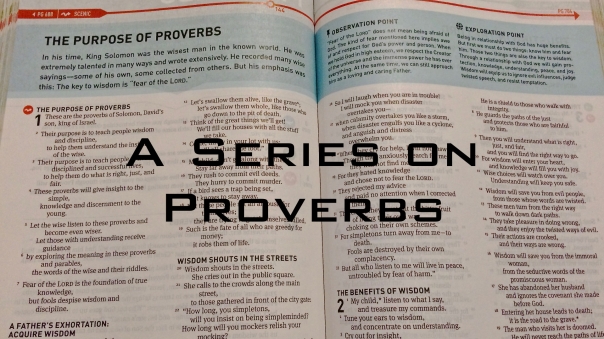Proverbs: Living the Garland Life
 We think we are so cool when we are young. At least I did. As a teenager, I remember feeling like this was the life. I was in control of my time, where I went, my tribe of friends, and I looked good doing it. Okay, that last one is debatable.
We think we are so cool when we are young. At least I did. As a teenager, I remember feeling like this was the life. I was in control of my time, where I went, my tribe of friends, and I looked good doing it. Okay, that last one is debatable.
The audience of Proverbs was, as we saw last time (Pr. 1:4), primarily “the simple.” In modern terms, the teenager. While it seems like teens stay that was well into their twenties, that’s a different topic.
In Hebrew culture, the simple person was moldable, immature, and could be easily swayed into becoming either wise or foolish. Being a simpleton was a fact of life for every person at some stage of their development, as is true today. It was vitally important that these young men hear the words of their parents and other wise people who had lived life ahead of them and learned how to act wisely.
In Proverbs 1:8-19, we see the first of several mini-sermons or exhortations written to this group of simple, young boys on their way to manhood. They are addressed from a father (and mother) to a son.
8Listen, my son, to your father’s instruction
and do not forsake your mother’s teaching.
9They are a garland to grace your head
and a chain to adorn your neck (Pr. 1:8-9, TNIV).
Listen! Code for catch what I’m about to tell you and obey it. It is interesting that the father’s and mother’s teachings are placed on the same level–they have equal weight and authority. These verses introduce all of 1:8-9:18, giving the impression that it all falls under parental wisdom.
The very first thing these simple young boys needed to hear was that this teaching was a garland for the head, a chain for the neck. Not “like” a garland, but a garland. Since the only time we grab garland is at Christmas, this doesn’t quite inspire obedience. “Oh, yeah, I’d better listen to my dad. Is that garland pre-lit?”
Since Proverbs draws on wisdom literature from other cultures, some of the imagery we find has its background there. The garland and chain were one example. In Egypt, the garland and chain were given by one of their gods to a person prior to his death if he had lived in that god’s service. It was a symbol of being granted eternal life. They would also symbolize to others that this person lived for the god and therefore was not going to be swayed into immoral behavior.
The point is this: Listen to our teaching and you’ll be headed down a path that ultimately leads to God. Live by it, and others will know that you are not chasing after the foolish things of this life.
I think back to my parents. They didn’t give me a garland–that might’ve made the teenage years even more awkward than they already were–but they did instill in me the need to differentiate myself from “the crowd” by living for God. And I’m glad they did.
Posted on January 16, 2017, in Scripture and tagged Proverbs, wisdom. Bookmark the permalink. Leave a comment.
Leave a comment
Comments 0